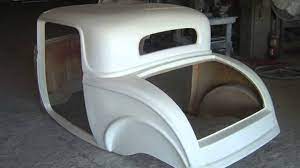Whether you're looking to manufacture fiberglass parts for your own use or as a supplier to your industry, there are a few key things you need to know. These include the differences between open and closed molding, laminating, and vacuum bagging cure.

Carbon fiber vs fiberglass
Probably the two most common choices for lightweight components are fiberglass and carbon fiber. They're both strong and light, and both can be used to reinforce engineering grade parts. However, there are some differences between the two.
Fiberglass is heavier than carbon fiber, but it has a high strength to weight ratio. It's been used for boat building, drainage products, and other inexpensive structural components for a long time. It's also corrosion resistant.
However, because it's not quite as strong as carbon fiber, it's more likely to shatter or break, and it can lose shape over time. It's also much more expensive.
While there are many advantages to both fibers, it's important to choose the right material for the job. Fiberglass can be used in applications that require high flex patterns, while carbon fiber is better for applications requiring higher strength and stiffness.
Fiberglass is also a bit cheaper than carbon fiber, and it can be found in many aftermarket parts. Fiberglass is also a good choice for applications that require corrosion resistance, abrasion resistance, or high chemical resistance.
Laminating tools
Using the right laminating tools for BLG Fiberglass Manufacturing & Supplier can improve the strength and quality of your fiberglass projects. From a simple hand pump to an aluminum roller, there are plenty of tools that can make a difference in your finished product.

The best laminating tools for fiberglass parts are the ones that are simple to use and make your job easier. Whether you're creating a small patch or a large structural laminate, you need the right tools for the job.
The most common tool used in laminating is a chopper gun. This simple tool can apply resin and glass to the mold simultaneously. The best thing about this tool is that there are no moving parts.
A plastic spreader, or squeegee, is also a key tool. This tool can be used to remove entrapped air from the laminate. It can be used with moderate pressure and is available at most automotive body repair supply stores.
A bubble buster roller is another tool that can increase the quality of your fiberglass project. This tool is made of aluminum and is available in many different sizes.
Open molding process
Whether you're a manufacturer looking for a high-quality, smooth finish or a production firm tasked with producing a variety of fiberglass parts, open molding is a good option. Unlike closed molding processes, open molding allows you to produce a variety of shapes and configurations while minimizing the tooling cost. It's also a good choice for customers with custom structural requirements.
The first step in the open molding process is to create a master shape. This could be a hand-made model, a screen coated with bondo body filler, or a CNC cut model. Once the shape is created, you can then start building up the mold.
Once the mold is built up, you're ready to start adding fiberglass. Fiberglass is a composite material that's used to produce a wide range of products. It can be applied by hand onto gel coat, or it can be sprayed onto the mold. Both methods produce fiberglass parts that can be used in the marine and recreational industries.
Vacuum bagging cure
Using vacuum bagging to cure fiberglass parts is a manufacturing method that produces high quality parts. The process is commonly used in the aerospace industry. The benefits of vacuum bagging include reduced humidity, improved mechanical properties, and a tighter control of thickness.
A vacuum bag is a flexible transparent film that encloses wet laminates. The film must reach the perimeter of the part to avoid leaks. It also must overlap the joints to provide adequate protection.
Vacuum bagging is used in a variety of applications including automotive composite parts, yachts, and partition panels. The process uses a variety of materials.

During the curing process, air is pulled from inside the vacuum bag, consolidating the composite. This helps to optimize the fiber-to-resin ratio. It also prevents the fiber orientation from shifting during the cure.
There are two major types of vacuum bagging: single vacuum bagging (SVB) and double vacuum bagging (DVB). The DVB process uses a perforated tool to facilitate the evacuation of volatiles during the curing process.